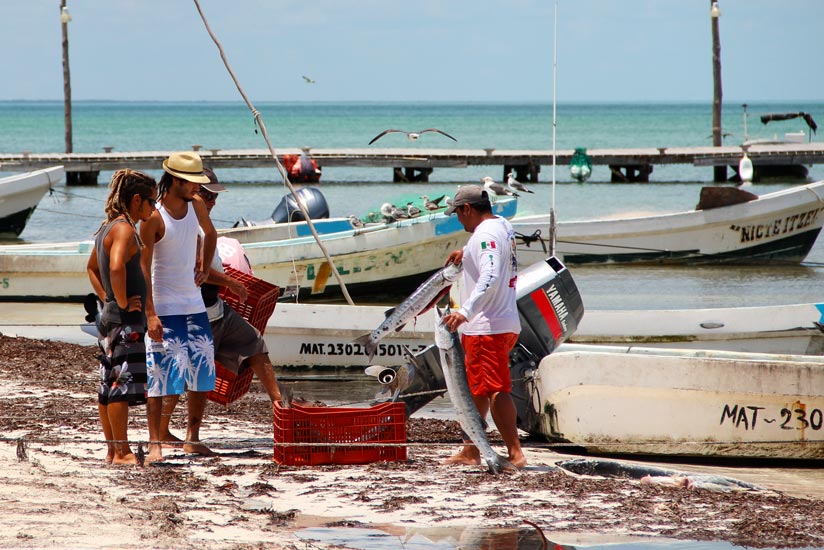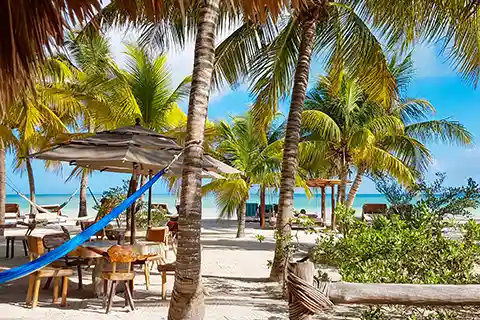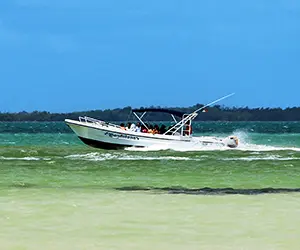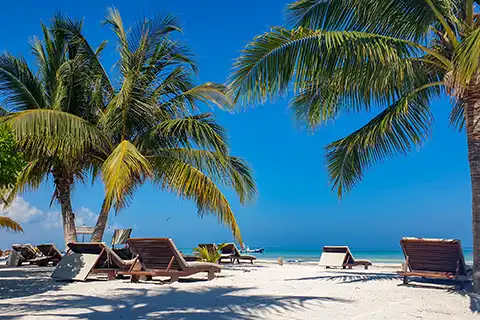History and Story
From a Mayan fishing village to a trendy vacation island
The History of Isla Holbox
The name Holbox comes from the Mayan people and means translated “black hole“, which is due to the dark color of the water in the mangroves of the nearby lagoon of Yalahau. The waters around Holbox are generally very shallow, with no deep water. Therefore, the water near the coast is usually a bit murky and sometimes slightly greenish. In the 16th century pirates, like Jean Lafitte, hid here. It was not until the 19th century that the Spanish came to the island and founded a village.
The first mentions of Isla Holbox can be found on a document from 1852, sent to the governor of Yucatán by the military commissioner Juan Díaz and the justice of the peace Don Bartolomé Magaña. The adjacent mainland had previously been attacked by rebellious Maya, so the people sought refuge on the island. The government wanted to prevent them from living on Holbox Island, but the citizens refused to leave their homes.
Thus, two years later, the inhabitants of the island were recognized as “Holboxeños”. As a result, Holbox gradually became a town of fishermen and farmers who traded with the mainland in Yucatán to obtain goods that were not available on the island. In the 1866 population census, it was found that 30 people lived on Isla Holbox.
In the following years, due to further Mayan attacks in the region around Tulum, families continued to flee to the island of Holbox, so the population slowly increased. A little later, two large companies began to extract raw materials such as rubber and paint from the virgin forests in the surrounding region, attracting numerous workers and helping the port of Holbox to become important.
In 1886, a hurricane completely destroyed the old town of Holbox Island. And although the final evacuation of the island was ordered by the governor of Yucatán at the time, the inhabitants once again refused to leave because they were already “as rooted there as the palm trees they had brought from the mainland.” Thus, the authorities had no choice but to accept the inhabitants.
After the village was rebuilt, trade resumed, small barracks and a school were built. In 1901, 544 inhabitants were counted, a figure that changed little over the next 60 years. In 1902, Yucatán was divided into separate states and Holbox was assigned to what is now the state of Quintana Roo. Later, in the time of the Mexican Revolution, the big wood processing companies withdrew.
Thus, fishing remained the only main source of income for the inhabitants, who formed a cooperative for fishery production. The motorization of shipping and the construction of a telegraph finally ended the island’s isolation, as did the airport that was later built and used to transport fresh lobster.
The ferry service to Chiquilá was not established until the 1990s. The last major hurricane, “Wilma,” swept over the island in October 2005, causing numerous severe damages. The island was evacuated at that time and left to the forces of nature themselves. However, it did not take long until the damage was repaired and the island shone in new splendor.
Today Isla Holbox has become a tourist destination for nature lovers. Whale sharks come here to scour the surrounding waters for plankton between May and September. The island with its long white sandy beaches and mangroves is not only a paradise for sea birds like herons and flamingos, but also for reptiles and (unfortunately) mosquitoes. Fishing still plays a major role here, which is why you can find fresh fish and seafood of all kinds on the menu in restaurants almost everywhere.

The Mayan language is still spoken in Yucatán and is called Yucatec Maya. Unfortunately, it is an endangered language, since there are only a few schools where it is taught and it is hardly ever passed on to the youth by the older population.



